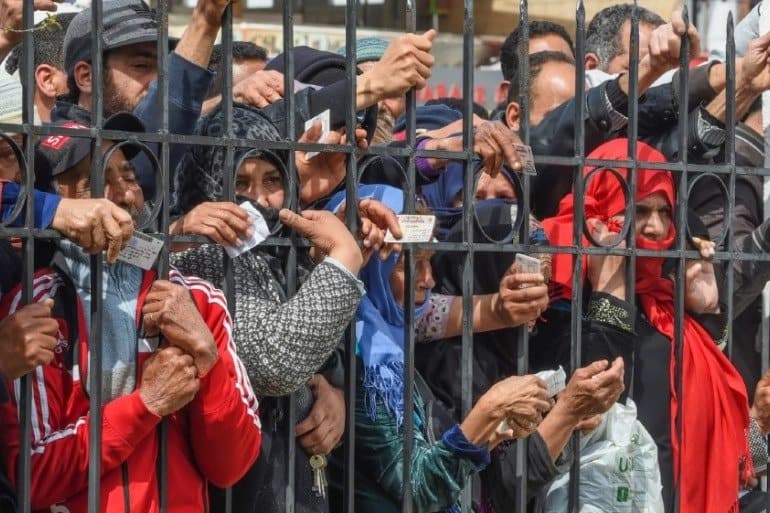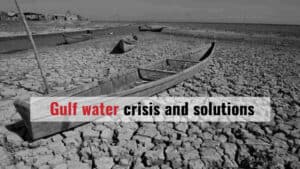Several indicators of the Tunisian economy have deteriorated recently, indicating the possibility of a crisis like the one plaguing the Lebanese economy.
Sources of income have been declining faster than expected, particularly considering the negative impacts of the Coronavirus on tourism.
According to the most notable indices of deterioration, the economy dropped nearly nine percent in 2020, and unemployment jumped from 15 percent before the pandemic to 18 percent by the end of Q1 2021.
Experts forecast that unemployment would eventually reach more than 30 percent among young people. In addition, Tunisia’s debt has grown to the point where it can no longer pay its payments and interest without availing of new loans from the International Monetary Fund (IMF).
In 2021, the country will have to pay more than US$4.5 billion in existing debt and acquire almost US$6 billion to fund the 2021 budget and eliminate the deficit. The external debt has increased to around US$35 billion, or more than 100 percent of GDP, from 45 percent in 2010, and the value of the Tunisian Dinar has fallen by half in 10 years.
The country’s current crisis threatens the state’s approaching bankruptcy, as it pursues new sources of funding amid a political crisis that casts a pall over the country’s increasingly complex and challenging economic situation. These conflicts have resulted in political gridlock in the government.
With the pandemic persisting, and with the decline in tourism of more than 64 percent by 2020, in addition to the decrease in industrial and agricultural performance, rising prices, and decreasing tax revenues, the only hope, for now, appears to be a new loan from the IMF to avoid an eventual collapse.
Difficulties in meeting IMF conditions
The Tunisian government is aiming for a $4 billion loan from the IMF. If all goes as planned, this loan should be released by the end of the summer, marking it the fourth of its kind in ten years.
One of the IMF’s most essential requirements is that the government implement extensive and painful economic reforms on a social level. These reforms include reducing basic commodity subsidies, cutting spending on wages, selling state shares and quotas in public sector institutions, and restructuring them.
How did Tunisia end up in this situation?
The Tunisian economy was one of the most diversified in the Arab world, especially since a decade ago when it benefitted greatly from a wide range of crops, as well as the textile and clothing industries and other manufacturing industries, which contributed for more than a third of Tunisia’s GDP at the time.
However, the ongoing and challenging political transition phase following the fall of Zine El Abidine Ben Ali’s regime, the consequences of the COVID-19 pandemic and the previous terrorist attacks have resulted in neglecting the productive local sectors by the political elites that have taken power since then.
Moreover, the political elites failed to make a genuine effort to reform and restructure public sector institutions to increase exports and reduce the rising trade deficit.
As a result, during the last three years, the debt has fluctuated between $6 billion and $7 billion. Considering the consequences of the COVID-19 pandemic, it is unlikely that the above deficit ratio will reduce.
The current government is trying to pass measures that neglect the difficult social situation to gain international donors’ approval, particularly from the IMF. However, the government appears to be willing to take measures, including lifting subsidies, to acquire the loan, and overcome the severe economic crisis, even if this requires the imposition of physical force.
It is worth mentioning that every loaf of bread purchased in Tunisia is subsidized by the government at 38.9 percent.
In addition, food items get a significant amount of support, including 55.9 percent for pasta and 56.6 percent for couscous, and 58.6 percent for cooking oil.
As a result, lifting subsidies would be a suicidal step that would result in a massive explosion, especially considering the poor social situation and the government’s lack of logistical readiness to implement such a risky policy.
Rising poverty
Poverty is expected to rise in Tunisia, as per a series of interviews conducted by the National Institute of Statistics (INS) and the World Bank, indicating signs that the pandemic had led people’s food choices to shift.
Low-income families, for example, reduced overall food consumption or started consuming less of their favorite foods. Families drew on their savings, received outside financial assistance, borrowed from relatives to cope with the rising of food prices and job losses.
According to a World Bank report, the number of poor and vulnerable people will increase from 16.7 percent to 20.1 percent of 11.7 million citizens in 2021.
In 2021, however, the fiscal deficit increased to 10 percent of GDP due to lower revenues from reduced economic activity and tax deferral measures, as well as the costs of the COVID-19 response program.
Tourism and transport both suffered the consequences of an 80 percent drop in passenger arrivals. It should be noted that by the end of 2020, nearly a quarter of formal businesses (23.6 percent), especially in the service sector, have either closed temporarily or permanently. This led to a 17.4 percent unemployment rate by the end of 2020, compared to 14.9 percent in the pre-pandemic period.
Slight improvement likely
Tunisia’s growth is expected to rise to four percent in 2021 as the effects of the pandemic on exports diminish and domestic demand recovers. The increase, however, will not be enough to recover production to pre-pandemic levels in 2019.
Following this short increase, growth is expected to return to a steadier pace, with a rate of around two percent by 2023, reflecting pre-existing structural weakness in the country. However, the recovery speed will be based on the severity of the outbreak in 2021, the vaccine’s rollout in Tunisia and significant trading partners, and measures to limit the pandemic’s impact on households and businesses.







